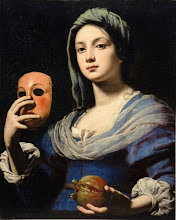
Zoroaster, detail, The School of Athens by Raphael
The qualities of the Chakras according to Sahaja Yoga are:
1)Mooladhara (Base) Chakra - earth, innocence, wisdom
2)Swadisthana (Pelvic) Chakra - fire, creativity
3)Nabhi (Navel) Chakra - water, sustenance, balance, prosperity
4)Anahata (Heart) Chakra - air, love, security.
5)Visshuddhi (Throat) Chakra, - ether/sky, communication
6)Agnya (Brow) Chakra - light, forgiveness, mind.
7)Sahasrara (Crown) Chakra - integration, union.
The Zoroastrian Amesha Spentas are:
1)Ameretat ("not dying") Rules over Plants. Personification of immortality.
2)Asha vahishta ("excellent order") Fire element. Personification of the 'best truth' and protector of the physical and moral order on earth.
3)Haurvatat ("wholeness"). Water element. Personification of perfection. She brings prosperity and health.
4)Aramaiti ("devotion") Earth element. Personification of holy devotion.
5)Khshathra vairya ("desirable dominion") sky/metal. A warrior.
6)Vohu Manah ("good mind") Personification of wisdom.
7)Ahura Mazda The Supreme Self
"In the context of the Zoroastrian view of creation, the group of the Amesha Spenta is extended to include Ahura Mazda, together with (or represented by) Spenta Mainyu. However, in most scholastic texts, an unqualified referral to the "Amesha Spenta" is usually understood to include only great six. In Yasna 44.7, 31.3, and 51.7, Ahura Mazda's Spenta Mainyu is the instrument or "active principle" of the act of creation. It is also through this 'Bounteous Force', 'Creative Emanation' or 'Holy Spirit' that Ahura Mazda is immanent in humankind (Yasna 33.6), and how the Creator interacts with the world (Yasna 43.6).
The doctrine also has a physical dimension, in that each of the heptad is linked to one of the seven creations, which in ancient philosophy were the foundation of the universe. These physical associations are only alluded to in the Gathas, and then so subtly that they are usually lost in translation.
A systematic association is only present in later middle Persian texts, where each of the seven is listed with its 'special domain':"



















No comments:
Post a Comment